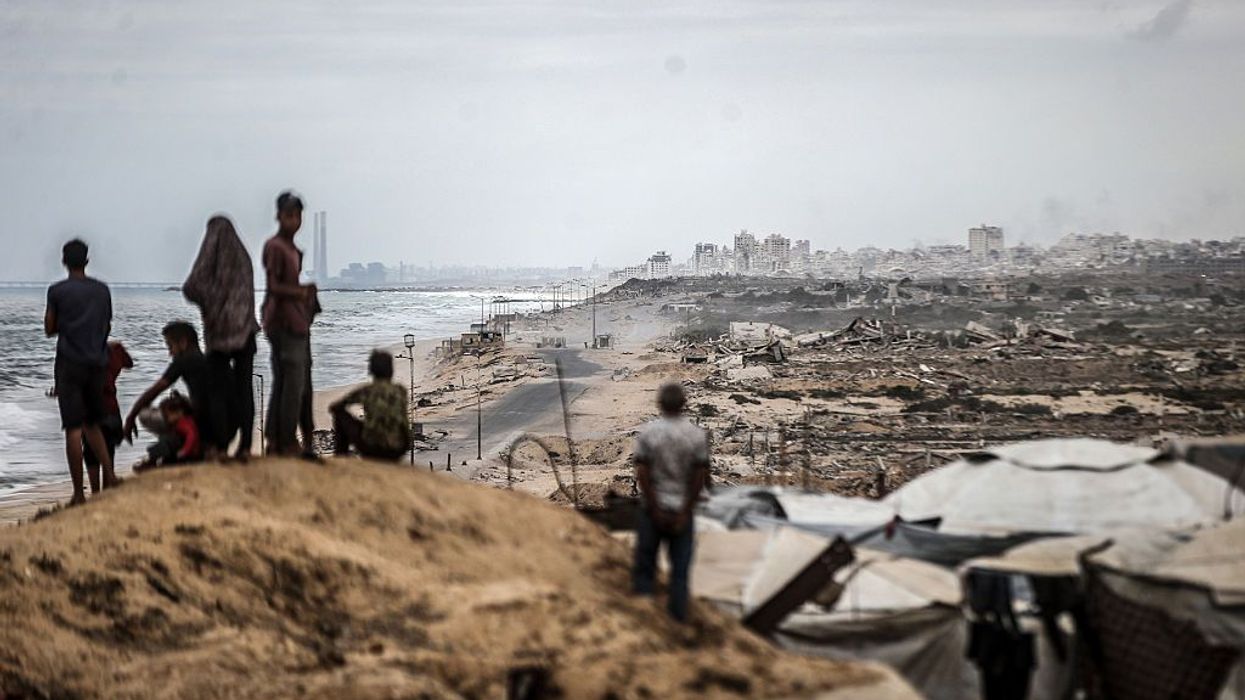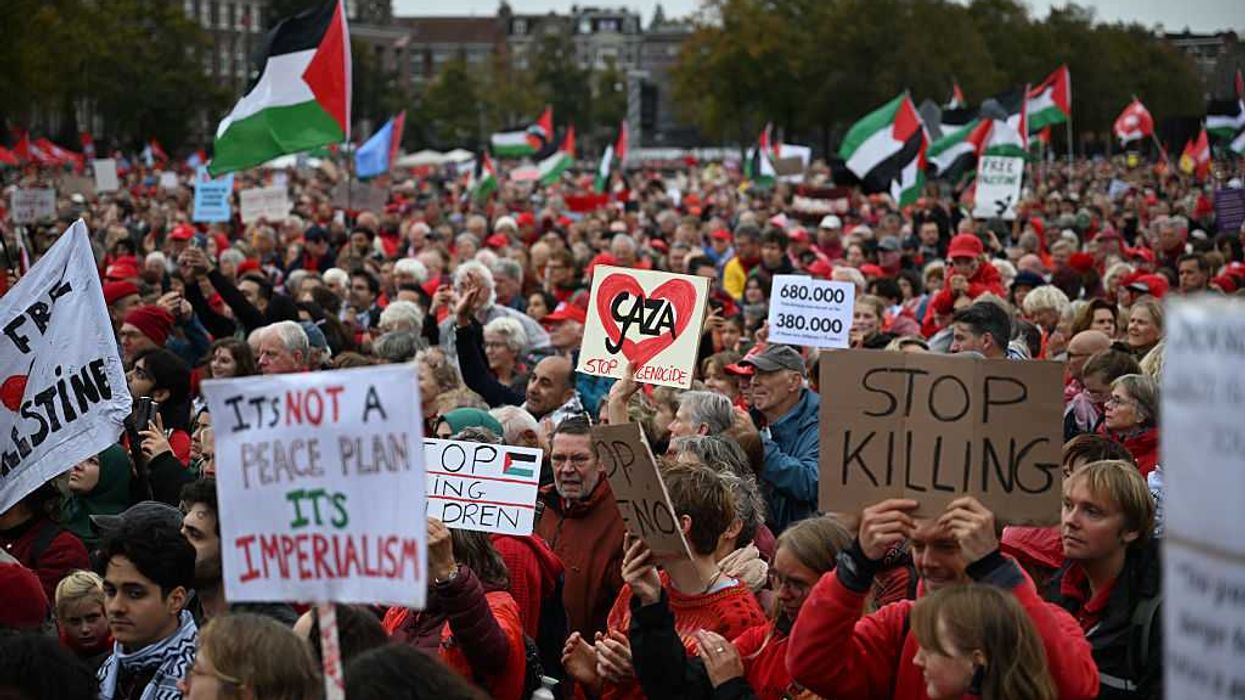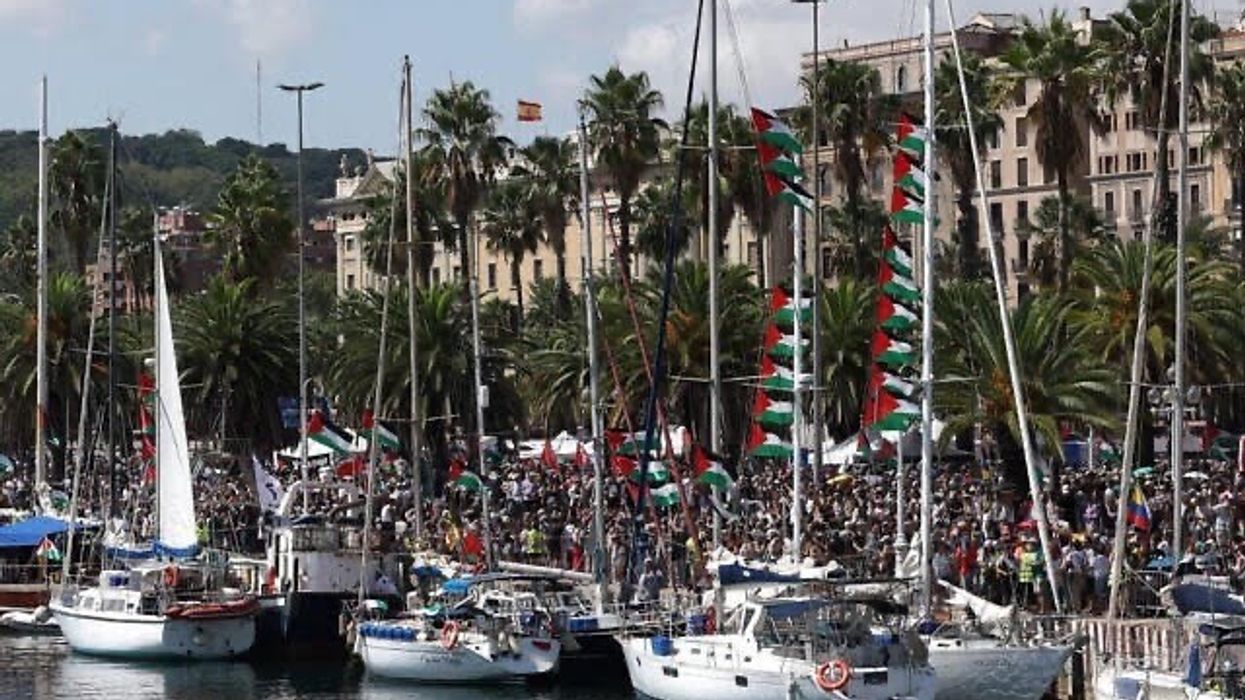Gaza Has a Ceasefire, Now Palestine Needs Self-Determination
Whether it’s the Israeli government, an international peacekeeping force, or a post-conflict reconstruction authority for Gaza chaired (grotesquely) by Donald Trump, the fate of Palestine still rests in the hands of outsiders.
All the living hostages held by Hamas returned to Israel this week. The 20 men have been reunited with their ecstatic families. It’s extraordinary that they are still alive, more than two years after Hamas and its allies seized them along with around 230 others after the attacks of October 7. They survived two years of captivity, of war, of privation. They survived when other hostages died during Israeli raids. They survived when the Israel Defense Forces killed at least 67,000 Palestinians—more than 80% of them civilians, according to leaked Israeli sources—during two years of aerial and ground assaults.
The survival of these 20 Israelis is a testament to their resilience, yes, but more so to their value. The hostages were the only asset that Hamas could trade for the release of Palestinian prisoners, a ceasefire to end the war, and a deal to guarantee a Palestinian state.
Israel released 2,000 Palestinian prisoners in exchange for these 20 men and more than 20 dead hostages. It has stopped bombing Gaza (though it is still killing people on the ground for alleged ceasefire violations). The IDF has withdrawn from some of the land it has occupied in Gaza. Israel is still restricting aid to the region to punish Gazans because Hamas has not returned all the bodies of the dead hostages (which may be held by other factions or lie inaccessible under the rubble).
Hamas is left with almost nothing. True, it too has survived, even though Israeli Prime Minister Benjamin Netanyahu had promised not to end the war without extinguishing Hamas. But without the hostages as collateral, the organization has no leverage to force the IDF to relinquish further territory or to guarantee that the Israeli government won’t resume bombing Gaza. As for Palestinian statehood, it remains as elusive after this hostage exchange as it has been for years.
Palestinians are no closer to determining their own future. Gaza lies in ruins. The West Bank is being gobbled up by Israeli settlers. Whether it’s the Israeli government, an international peacekeeping force, or a post-conflict reconstruction authority for Gaza chaired (grotesquely) by Donald Trump, the fate of Palestine still rests in the hands of outsiders.
Immediate Future
Although Trump, in his triumphalist address to the Israeli Knesset, took the peace deal for granted—and spoke grandly of a peace deal for the entire region—Israeli and Palestinian negotiators have not agreed on the next steps for Gaza. Hamas, not surprisingly, wants to continue being politically relevant. To that end, it has refused to give up its weapons, which is all that’s left of its much-diminished power. Israel wants complete disarmament and no political future for Hamas, which would reduce it to the status of a Boy Scout troop. Trump has threatened to disarm Hamas by force, which sounds a lot like the return of armed conflict.
But then who will administer Gaza? Trump’s plan calls for “a technocratic, apolitical Palestinian committee, responsible for delivering the day-to-day running of public services and municipalities for the people in Gaza.” In other words, Trump wants to install a group of functionaries who don’t aspire to do anything other than take out the trash and keep the hospitals running. Israel doesn’t want anything that looks like an actual state that could unite with Palestinians in the West Bank, develop a truly sustainable economy, or (god forbid) develop a foreign policy.
With Tony Blair running the reconstruction authority, it will all start to look like the aftermath of the Iraq war—and that didn’t work out so well for Iraqis.
The Palestinian Authority (PA) is maneuvering to play a role in the new Gaza administration even though Israel wants it sidelined. The Trump administration has such contempt for the PA and the associated Palestinian Liberation Organization that it revoked the visas of their representatives to attend the United Nations General Assembly last month in New York. Marwan Barghouti, a dynamic figure who could take the reins of the PA and unify Palestinians, remains in Israeli prison. According to the peace deal, the PA is expected to “complete its reform program,” which basically means that it must become even more subservient to Israeli and American interests before it will be invited back to the table. Behind the scenes, however, a compromise is emerging whereby the PA will likely play a role in choosing the functionaries in charge in Gaza and supplying guards for the border crossing to Egypt.
In any case, the real power in Gaza will be held by an international authority, the “Board of Peace,” chaired by Donald Trump and run (probably) by the UK’s Tony Blair. This authority will preside over the economic reconstruction of Gaza. Trump’s plan speaks of “convening a panel of experts who have helped birth some of the thriving modern miracle cities in the Middle East.” He probably has the cities of the Gulf States in mind—Dubai, Doha—but they of course had oil wealth to spend. Meanwhile, it’s impossible to forget Trump’s preferred strategy of turning Gaza into a huge resort where rich Emiratis and Americans enjoy a Club Med experience while the Palestinians who remain serve them drinks and clean their hotel rooms.
To make sure that Hamas doesn’t stage a comeback with a hidden cache of weapons, an Arab-led peacekeeping force is supposed to take over from the IDF as it withdraws from occupied territory. Of course, any peacekeeping body would be an improvement over the IDF, and an Arab force has been part of many proposals for Gaza over the years. On the positive side, such a force would more than likely prevent the expulsion of Palestinians from their land—because the Arab countries in the region don’t want an influx of Palestinian refugees. On the negative side, Arab countries would likely go along with the implementation of a plan that makes Palestinians second-class citizens—because that’s often how they are treated elsewhere in the region.
Also, the US military will be involved in the initial stages of this peacekeeping plan. With Tony Blair running the reconstruction authority, it will all start to look like the aftermath of the Iraq war—and that didn’t work out so well for Iraqis.
Near Future?
Where does that leave a Palestinian state?
The more support other countries give to Palestinians by recognizing their state—in the absence of an actual state—the more Israel seems to push back against the international consensus. Before the peace deal, the country’s minister in charge of national security, Itamar Ben-Gvir, talked of Israel’s “complete crushing” of the Palestinian Authority by annexing the West Bank. In supporting a push for more settlements that effectively divide the West Bank in two, Netanyahu declared that “there will never be a Palestinian state.”
Even though 11 more countries recognized a Palestinian state last month at the UN General Assembly, the Trump administration has held firm in its refusal to go along. During Trump’s speech to the Knesset, two Israeli politicians were kicked out of the assembly for calling on the United States to follow the lead of Canada, the UK, and 155 other countries.
Yes, Trump’s peace plan talks about creating conditions for “a credible pathway to Palestinian self-determination and statehood.” But it is pushed into a hypothetical future, much like Barack Obama once supported nuclear disarmament, though not in his generation or even his children’s generation but at some vague point in the future. There’s kicking the can down the road, and then there’s kicking the can into the Van Allen belt.
In the meantime, Israel will continue to reduce the material basis of a Palestinian state by creating new settlements in the Occupied Territories, preventing the rise of credible political actors in the Palestinian community, and keeping all the important levers of power in the hands of the IDF or external actors.
Eyes on the Prize
Benjamin Netanyahu has been in charge of Israel for much of the last 30 years (with a break in the early 2000s). He has presided over a shift in Israeli politics to the far-right. The left has practically disappeared. One of the few credible challengers to Netanyahu, Naftali Bennett, is even further to the right of the prime minister.
The 2026 elections may change all that. Even with the Gaza deal in place, Netanyahu faces the very real possibility that he won’t be able to put together a governing coalition. The far-right parties that have kept his current government afloat are losing ground. According to the latest polling, Otzma Yehudit would maintain its six seats if elections were held today. But Religious Zionism, which currently has seven seats, wouldn’t even make it into the Knesset.
But whoever emerges from the next elections, they won’t accept a Palestinian state unless they are pressured to do so.
Going into the elections, Israeli voters won’t soon forget (or forgive) Netanyahu for the security lapses that led to the October 7 attacks, his refusal to take advantage of earlier diplomatic opportunities to negotiate hostage returns, and his ongoing corruption charges. They won’t likely forget the hostility of the far-right to any ceasefire and the fact that Netanyahu had to have his arm twisted by Trump to negotiate (finally) the hostage release.
Of course, Netanyahu is a survivor. He has been held hostage by parties even further to the right, and yet he has proven resilient. He still might jettison those far-right parties and find a new governing majority. Perhaps in yet another term he would reverse the worst anti-Palestinian policies (doubtful). Perhaps voters will send him into retirement (and, with luck, into prison).
But whoever emerges from the next elections, they won’t accept a Palestinian state unless they are pressured to do so. Conjuring such a state out of the broken pieces of the Palestinian community will be much more difficult than the negotiation of a prisoner exchange or even a ceasefire. Let’s first see if the next stage of the Gaza deal can be achieved—the further withdrawal of the IDF, a compromise over the future of Hamas, the delivery of sufficient humanitarian aid, the introduction of a peacekeeping force, and the start of economic reconstruction.
But let’s also be clear: Those steps would only bring Gaza back to where it was, more or less, before October 7. The world must keep its eyes on the prize. Palestinians need a viable state that can coexist with Israel and ensure that the genocide that Israel attempted over the last two years will never happen again.


